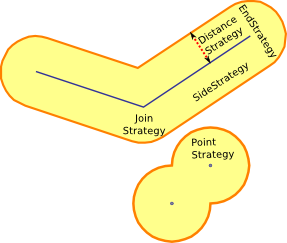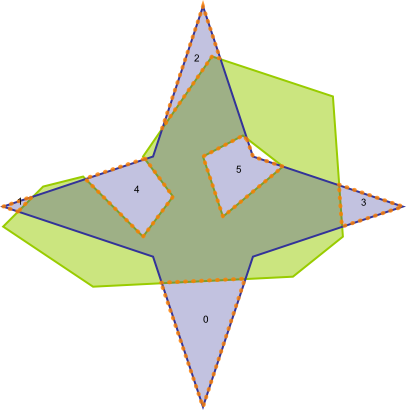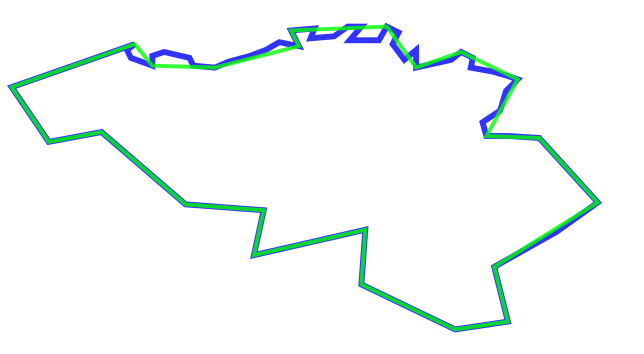A COLREGs-based obstacle avoidance approach for unmanned surface vehicles
[toc]
Unmanned surface vehicles (USVs) are autonomous marine vessels that
can execute multiple tasks in a variety of cluttered marine environments
without human supervision. The future progress of USVs depends on the
development of full autonomy, which would enable USVs to work in any
unstructured or unpredictable environment without human
intervention.
One of the main challenges in enhancing USV autonomy is the
simultaneous detection and avoidance of obstacles in either open or
confined waters. Local obstacle avoidance for USVs is used to avoid
static and dynamic obstacles by adopting a timely avoidance manoeuvre.
Local obstacle avoidance algorithms are of two types: path
searching-based local path planning, which can generate appropriate
trajectories or waypoints followed by the vehicle, and the
behaviour-based reactive obstacle avoidance method, which can generate
the guidance angle and guidance velocity realized by the navigation
controller in real time.
A novel path searching-based algorithm called the local normal
distribution-based trajectory (LNDT) is proposed in this paper to
address the local obstacle avoidance problem of USVs in complicated
encounter situations. The design and implementation of LNDT has been
published in Ocean
Engineering with reference
link. Besides, there is a
copy only for personal research purpose.
The following sections mainly discuss the implementation principle of
the algorithm and provide some critical information to facilitate the
following researchers. About the detailed information, you can refer my
master thesis - Research
on the Technology of Path Planning for Unmanned Surface Vehicle,
while it is written in Chinese. The LNDS method is mainly extracted from
my master thesis and polished in simulation.
Abstract
英文在中文之后 / English follows Chinese
本文讲述了一种新型的、遵守 COLREGs 规则的无人水面艇 (USV) 自动避障方法的初步研究结果。这个方法本质上是一种基于路径搜索的算法,称为局部正态分布轨迹法,该算法可以在存在静态和动态障碍物的情况下规划出可行的避障轨迹。算法可以根据正态分布的钟形曲线生成符合 COLREGs 的次优轨迹,并提取航路点以供导航控制器安全操纵 USV。此外,我们讨论了构成钟形曲线的三个关键参数,并提出了一种轨迹重新规划策略,以提高该方法的安全性和灵活性。我们在实验中模拟了常见的超车、交叉和正面碰撞情况来验证算法,仿真表明该方法考虑了多个因素,可以规划出能够安全、平滑地避开障碍物的路径。此外,该方法还和另一种遵守 COLREGs 规则的反应式避障方法做了比较。
This paper reports the preliminary research results of a novel
automatic obstacle avoidance approach based on the COLREGs for unmanned
surface vehicles (USVs). The approach presented is essentially a path
searching-based algorithm called the local normal distribution-based
trajectory, which plans viable avoidance trajectories in the presence of
both static and dynamic obstacles. The proposed algorithm can generate a
COLREGs-compliant suboptimal trajectory based on the bell-shaped curve
of normal distribution and extract waypoints for the navigation
controller to steer USVs safely. In addition, we discuss three key
parameters and present a trajectory replanning strategy to improve the
safety and flexibility of our approach. The common overtaking, crossing
and head-on collision scenarios are each simulated in experiments. It is
shown through simulations that the proposed approach considers multiple
factors and can plan paths to avoid obstacles safely and smoothly. A
comparison is also made with a reactive path planning algorithm which
has been modified to follow the COLREGs.
Design and Implementation
The overall scheme of obstacle avoidance is illustrated in following figure. The decision-making module in the dashed frame includes a two-layered distributed architecture of obstacle avoidance; we primarily study the COLREGs-based obstacle avoidance approach.

The LNDT algorithm includes six processes, as shown below. We first integrates COLREGs rules into the obstacle avoidance approach of USVs. When there is a collision risk, it would determine three key parameters of the trajectory by a fixed procedure, and the primitive trajectory would be rotated and translated to adapt the real collision scenario. The USV then follows the planned trajectories. We would replan the trajectory once USVs can not follow the planned trajectory.

Besides, we propose a scalable and flexible obstacle avoidance architecture. And we proposes six evaluation indicators to establish a scientific and impartial obstacle avoidance behaviour assessment (OABA) method in this paper.
Others
The LNDT algorithm is mainly implemented in 2018, and it has not
been tested in complex sea trial, so there must be some drawbacks to
improve.
In order to put it into wide practice, I'm glad to discuss some topics
with you via email and polish this method, even share part of the source
code with you.

























